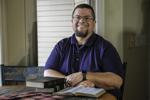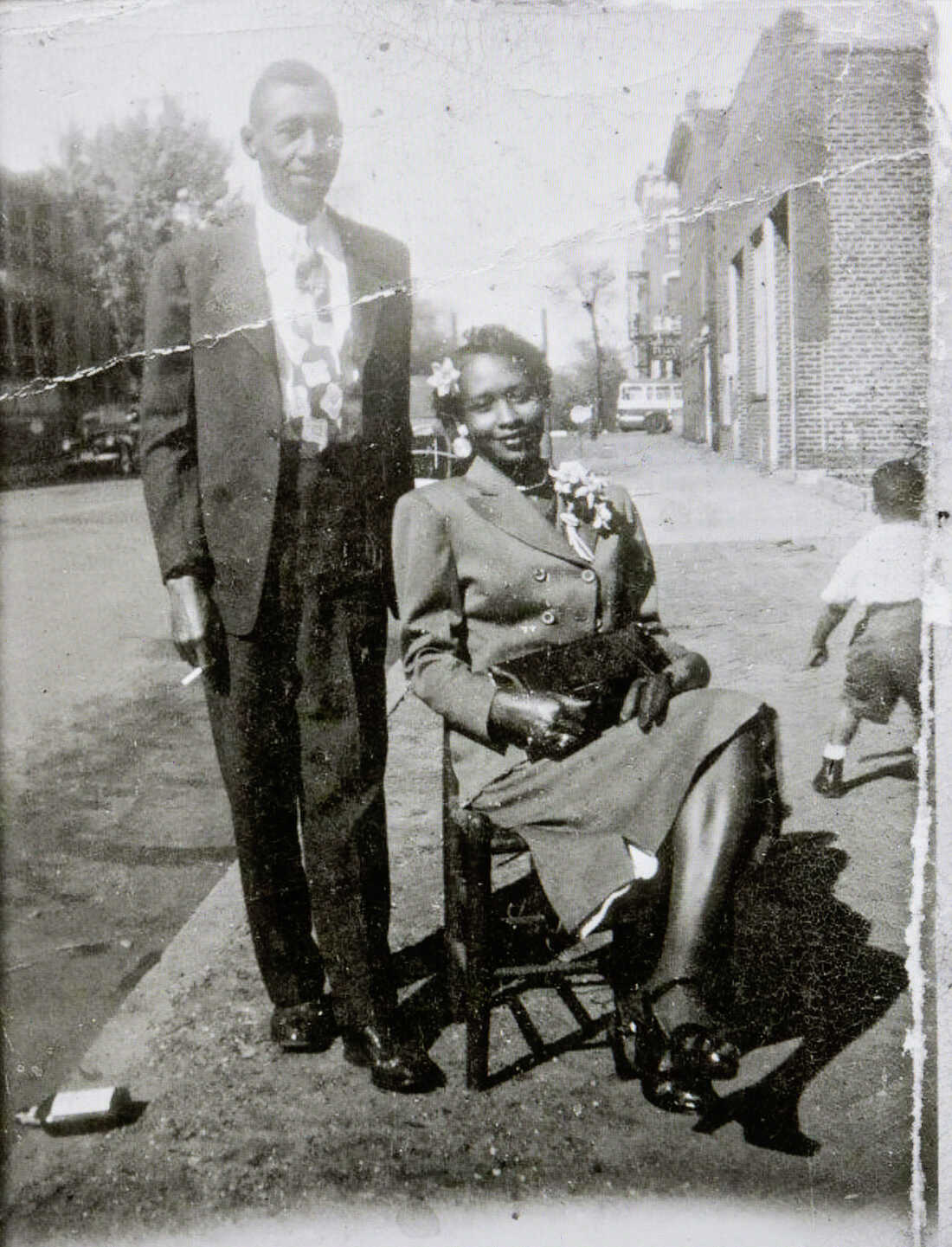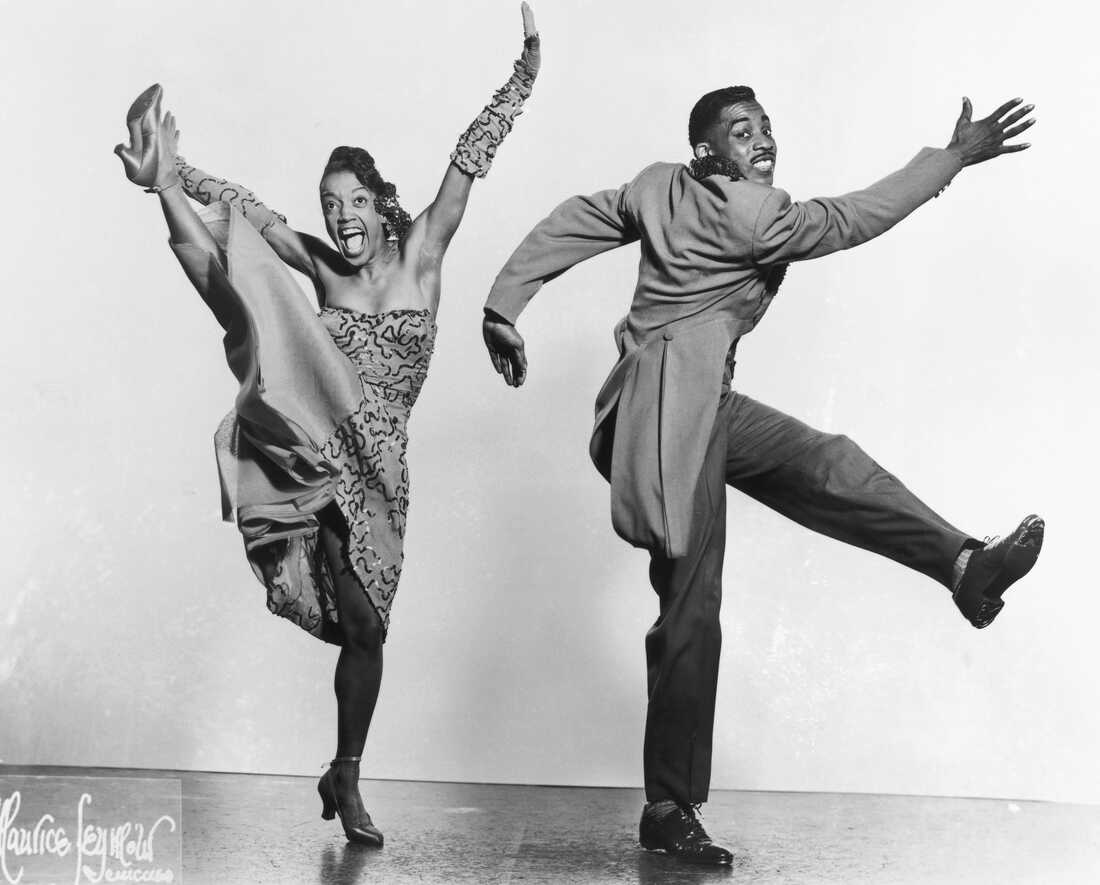
Jay Gunn is the assistant director of discipleship for Wycliffe Associates, an international organization that translates the Bible into native languages.
Jay Gunn does not speak Cape Verdean Creole. Nor is he able to communicate in Dutch or in the native English-Creole spoken in Turks and Caicos.
In fact, he does not speak any tongues other than English, yet he has a hand in the translation of the Bible into these and 839 other languages.
Gunn, 43, is the assistant director of discipleship for Wycliffe Associates, a role which he says is a perfect fit, giving him an opportunity to serve and care for those around the world who are working on active translation projects.
Think of Gunn as a staff pastor for all of the other employees and volunteers of the not-for-profit organization.
“My primary role right now is to be a sort of chaplain for our team,” Gunn explained. “I am the one who just checks in with people, making sure they are being taken care of. To use a phrase from my days as a United Methodist pastor, my job is to ask them, ‘How is it with your soul?’”
Gunn used a Biblical example to describe his position.
People are also reading…
“In the Book of Exodus, it was the job of Aaron and Hur to help Moses hold up his hands so Israel would prevail. It’s my job to keep our guys’ hands in the air as they go and do what God has called us to do as an organization,” he said.
How Gunn landed in the role is a story in itself. Having worked as a conductor with Amtrak for eight years, he said in 2020 he could sense cutbacks and layoffs coming because of the pandemic. He saw an ad for a regional director position with Wycliffe Associates. The Orlando-based group was looking for someone to handle relationships with churches and translators in the Pacific Region. His application led to several conversations with administrators and leaders, who eventually invited Gunn and several other applicants to an in-person, multi-day interview in Florida.
Despite being in meetings with others competing for the same job, Gunn said he felt, not animosity toward the others, but rather a sense of shared mission.
Gunn shared his experience. “Through the beginning of the week, I had this thought that I just wanted to take care of these guys, but there was nothing in the organizational chart for that,” he said. “Then on Wednesday, Sam, who would be our director opened up and said he was creating a new position with the organization. He said, ‘We’ve been doing this for four years and I have this desire for someone to take care of my guys, to look out for them, sort of like a chaplain. Do you guys have any ideas?’ he asked. I had goosebumps and told him what I had been feeling.”
Wycliffe Associates had found their man and Gunn had found a new calling. Today, working remotely from his home in Marion, Gunn leads regularly scheduled staff devotional videos, making face-to-face check-ins over Zoom, leading team chapels and prayers as well as just checking in with people, providing support and encouragement and helping however he can. He said his role is ever-changing.
“One of the cool things is it’s always in process. We don’t know how it will look in the future,” he said. “Right now we are looking at how best to do the team care aspect of things.”
Gunn said the goal is to lend support to those placed internationally, who work with locals, training and helping them translate the Bible into their native tongues – what Gunn calls “heart languages.”
“Heart language is what people speak when they are at home, when they are with their families. It’s the language they dream in and they language they speak from the heart, whether or not it is the official language in their country,” he explained.
He said the work is overwhelming, but very rewarding.
“There are still thousands of languages that do not have a Bible. In my Midwestern American church context, I’ve never known life without the Bible. I can’t imagine those who do not have that,” he said. “To hear people read from the Bible in their own heart language for the first time, it is a feeling you never forget. It’s life-changing and I am excited to be part of that.”
Climate change is having an impact on the amount of snow we see in Illinois. Chief Meteorologist Matt Holiner takes a look at how things have changed so far and what we can expect in the future.
11 delicious Christmas recipes
Chocolate Crinkle Cookies

Ingredients:
- 1 cup all-purpose flour
- 1/2 cup unsweetened cocoa powder
- 1 teaspoon baking powder
- 1/4 teaspoon baking soda
- 1/2 teaspoon salt
- 1 1/2 cups packed brown sugar
- 3 large eggs
- 4 teaspoons instant espresso powder
- 1 teaspoon vanilla extract
- 4 ounces unsweetened chocolate
- 4 tablespoons unsalted butter
- 1/2 cup granulated sugar
- 1/2 cup confectioners' sugar
Prep: 1 hour, 22 servings
Directions: Preheat oven to 325 degrees F. Line two baking sheets with parchment paper. Whisk flour, cocoa, baking power, baking soda and salt in a large bowl.
Get another bowl, whisk brown sugar, eggs, espresso powder and vanilla together in large bowl. Microwave chocolate and butter in a bowl, then stir until fully melted.
Whisk chocolate mixture into egg mixture until combined. Fold in flour mixture until no dry streaks remain. Let dough sit at room temperature for 10 minutes.
Spread granulated sugar in shallow dish. Spread confectioners' sugar in second shallow dish. Working in batches, drop 2-tablespoon mounds of dough directly into granulated sugar and roll to coat. Transfer dough balls to confectioners' sugar and roll to coat; space dough balls evenly on prepared sheets.
Bake cookies for about 12 minutes, rotating the sheet halfway through baking. Let cookies cool for 5 minutes, then serve.
Gingerbread Layer Cake

Ingredients:
- 1 3/4 cups (8 3/4 ounces) all-purpose flour
- 1/4 cup (3/4 ounce) unsweetened cocoa powder
- 2 tablespoons ground ginger
- 1 1/2 teaspoons baking powder
- 1 teaspoon ground cinnamon
- 3/4 teaspoon salt
- 1/2 teaspoon ground white pepper
- 1/8 teaspoon cayenne pepper
- 1 cup brewed coffee
- 3/4 cup molasses
- 1/2 teaspoon baking soda
- 1 1/2 cups (10 1/2 ounces) sugar
- 3/4 cup vegetable oil
- 3 large eggs, lightly beaten
- 2 tablespoons finely grated fresh ginger
- 5 cups frosting
- 1/4 cup chopped crystallized ginger (optional)
Prep: 3 hours 30 minutes, 12-16 servings
Directions: Adjust oven rack to middle position and heat oven to 350 degrees. Grease and flour two 8-inch round cake pans and line pans with parchment paper. Whisk flour, cocoa, ground ginger, baking powder, cinnamon, salt, pepper, and cayenne together in large bowl. Whisk coffee, molasses, and baking soda in second large bowl until combined. Add sugar, oil, eggs, and fresh ginger to coffee mixture and whisk until smooth.
Whisk coffee mixture into flour mixture until smooth. Pour 1 1/3 cups batter into each prepared pan. Bake until toothpick inserted in center comes out clean, 12 to 14 minutes. Let cakes cool in pans on wire rack for 10 minutes.
Remove cakes from pan, discarding parchment, and let cool completely on rack, about 2 hours. Wipe pans clean with paper towels. Let pans cool completely, regrease and reflour pans, and line with fresh parchment. Repeat process with remaining batter.
Line edges of cake platter with 4 strips of parchment to keep platter clean. Place 1 cake layer on platter. Spread 3/4 cup frosting evenly over top, right to edge of cake. Repeat with 2 more cake layers, pressing lightly to adhere and spreading 3/4 cup frosting evenly over each layer.
Top with remaining cake layer and spread remaining frosting evenly over top and sides of cake. Garnish top of cake with crystallized ginger, if using. Refrigerate until frosting is set, about 30 minutes, before serving.
Holiday Cookies

Ingredients:
- 2 1/2 cups (12 1/2 ounces) all-purpose flour
- 3/4 cup (5 1/4 ounces) superfine sugar
- 1/4 teaspoon salt
- 16 tablespoons unsalted butter, cut into 1/2-inch pieces and softened
- 1 ounce cream cheese, softened
- 2 teaspoons vanilla extract
- 2 cups (8 ounces) confectioners sugar
- 3 tablespoons milk
- 1 ounce cream cheese, softened
- Food coloring (optional)
Prep: 2 hours, 36 servings
Directions: Using stand mixer fitted with paddle, mix flour, sugar, and salt on low speed until combined. Add butter, 1 piece at a time, and mix until dough looks crumbly and slightly wet, 1 to 2 minutes. Add cream cheese and vanilla and beat until dough just begins to form large clumps, about 30 seconds.
Transfer dough to counter; knead just until it forms cohesive mass and divide in half. Form each half into disk, wrap disks tightly in plastic wrap, and refrigerate for at least 30 minutes.
Working with 1 disk of dough at a time, roll dough 1/8 inch thick between 2 large sheets of parchment paper. Slide dough, still between parchment, onto baking sheet and refrigerate until firm, about 10 minutes.
Adjust oven rack to middle position and heat oven to 375 F. Line two baking sheets with parchment. Working with one sheet of dough at a time, remove top piece of parchment and cut dough into shapes with cookie cutters. Using thin offset spatula, transfer shapes to prepared baking sheet, spacing them about 1 inch apart.
Bake cookies, one sheet at a time, until light golden brown, about 10 minutes, rotating sheet halfway through baking. Let cookies cool on sheet for 3 minutes, then transfer to wire rack. Let cookies cool completely before serving.
Mix confectioners sugar, 3 tablespoons milk, 1 ounce cream cheese and food coloring in bowl until smooth. Spread on cookies once cooled.
Kugelhopf (Sweet Bread)

Ingredients:
- 2/3 cup dried cherries, chopped coarse
- 1/3 cup golden raisins
- 1/4 cup (2 ounces) kirsch or other cherry-flavored brandy
- 3 1/2 cups (17 1/2 ounces) all-purpose flour
- 4 teaspoons instant or rapid-rise yeast
- 1 teaspoon salt
- 2/3 cup (5 1/3 ounces) whole milk, room temperature
- 3 large eggs, room temperature
- 6 tablespoons (2 2/3 ounces) granulated sugar
- 8 tablespoons (4 ounces) butter, softened
- 1/4 cup sliced almonds
- Confectioners' sugar
Prep: 9-10 hours, 16 servings
Directions: Microwave cherries, raisins, and kirsch in covered bowl until steaming, about 1 minute. Let sit until cherries and raisins have softened, about 15 minutes. Drain fruit and reserve kirsch.
Whisk flour, yeast, and salt together in bowl of stand mixture. Whisk milk, eggs, granulated sugar, and reserved kirsch in 4-cup liquid measuring cup until sugar has dissolved. Using dough hook on low speed, slowly add milk mixture to flour mixture and mix until cohesive dough starts to form and no dry flour remains, about 2 minutes, scraping down bowl as needed.
Increase speed to medium-low and knead until dough begins to pull away from sides of bowl but sticks to bottom, about 5 minutes. With mixer running, add butter, 1 tablespoon at a time, and knead until butter is fully incorporated, about 4 minutes.
Continue to knead until dough is elastic and slightly sticky, about 3 minutes. Reduce speed to low, add fruit mixture, and mix until incorporated, about 1 minute. Transfer dough to lightly greased large bowl or container, cover tightly with plastic wrap, and let rise for 30 minutes.
Using greased bowl scraper (or your fingertips), fold dough over itself by gently lifting and folding edge of dough toward middle. Turn bowl 90 degrees and fold dough again; repeat turning bowl and folding dough 2 more times (total of 4 folds). Cover tightly with plastic and let rise for 30 minutes. Fold dough again, then cover bowl tightly with plastic and let dough rise until nearly doubled in size, 1 to 11/2 hours.
Grease 12-cup nonstick Bundt pan and sprinkle bottom with almonds. Press down on dough to deflate, then transfer to lightly floured counter. Using your lightly floured hands, press dough into 8-inch round.
Using your fingertips, press through and stretch center of dough to create 2-inch hole.
Place dough in prepared pan and gently press into even thickness. Cover loosely with greased plastic and let rise until loaf is level with lip of pan, 2 to 2 1/2 hours.
Adjust oven rack to lower-middle position and heat oven to 350 F. Bake until golden brown and loaf registers 190 F to 195 F, 25 to 30 minutes, rotating pan halfway through baking. Let loaf cool in pan for 10 minutes, then invert loaf onto wire rack and let cool completely, about 3 hours. Dust with confectioners' sugar and serve.
Sausage-Egg Casserole

Ingredients:
- 1 pound pork sausage
- 8 eggs
- 2 1/2 cups milk
- 1 teaspoon salt
- 1 teaspoon ground mustard
- 6 slices bread
- 1 cup shredded cheddar cheese
Prep: 1 hour 15 minutes, 12 servings
Directions: Brown the sausage in a skillet, drain and discard excess grease.
Beat eggs in a large bowl, stir in milk, salt and mustard. Then add the bread cubes, cheese and sausage into the egg mixture.
Pour it all into a greased baking dish. Cover and refrigerate overnight.
Take the casserole out of the fridge 30 minutes before baking. Bake at 350 degrees for 40 minutes. If you want a little more kick, you can use spicy sausage or top with a little hot sauce.
Chocolate-covered Peanut Butter Balls

Ingredients:
- 1 1/2 cups powdered sugar
- 1/2 cup creamy peanut butter
- 3 tablespoons butter
- 1 pound dipping chocolate
Prep: 15 minutes, 10 servings
Directions: Mix powdered sugar and peanut butter. Shape mixture into 1-inch balls and place them on a sheet of waxed paper.
Melt the dipping chocolate (you can also use chocolate chips; add a scoop of shortening and melt over a double boiler). Using a tooth pick, dip peanut butter balls into the chocolate.
Place back on the waxed paper and let them cool, then store in the fridge.
Ratatouille (Sauteed Provencal Vegetables)

Ingredients:
- 3 cups washed, peeled sliced eggplant
- 2 cups sliced zucchini
- 2 cups sliced button mushrooms
- 1 1/2 cups low-sodium pasta or tomato sauce
- Salt and freshly ground black pepper
Prep: 20 minutes, 2 servings
Directions: If eggplant slices are large, cut them in half. Add eggplant, zucchini, mushrooms and pasta sauce to a medium saucepan. Bring to a simmer over medium heat. Lower heat and cover. Simmer 15 minutes. Vegetables should be cooked through but a little firm. Add salt and pepper to taste.
Hot Chocolate Cupcakes

Ingredients:
- 1 ¾ Cup All-Purpose Flour
- 1 Cup Granulated Sugar
- 2/3 Cup Cocoa Powder
- 1 ½ Teaspoons Baking Soda
- 1 Teaspoon Baking Powder
- 2 Large Eggs
- ¾ Cup Buttermilk
- ½ Cup Vegetable Oil
- 2 Teaspoons Vanilla Extract
- 1/3 Cup Tony's Praline Honey Ham Injectable Marinade
- 1/3 Cup Strongly Brewed Hot Coffee
- ¼ Cup Cold Water
- 2 Tablespoons Cornstarch
- ¾ Cup Chopped Pecans
- ½ Cup Packed Light Brown Sugar
- ¼ Cup Cocoa Powder
- 1 Teaspoon Vanilla Extract
- ¾ Cup Tony's Praline Honey Ham Injectable Marinade
- ¾ Cup (3 Sticks) Unsalted Butter, Room Temperature
- 3 ¾ Cup Powdered Confectioners' Sugar
- 9 Ounces Cream Cheese, Softened
- ¾ Cup Vegetable Shortening
- ¼ Cup Cocoa Powder
- ½ Tablespoon Tony's Praline Honey Ham Injectable Marinade
Prep: 1 hour 30 minutes, 16 servings
Instructions: Preheat oven to 350 degrees F. Line muffin pans with parchment paper.
Whisk together cupcake dry ingredients. Whisk eggs and then cupcake liquid ingredients. Combine hot coffee. Add cupcake batter to cups. Bake for 20 minutes or until tester comes out clean. Cool, then refrigerate.
Whisk together cornstarch and water in saucepan. On medium heat, whisk in remaining praline filling ingredients. Frequently whisk mixture; 7 minutes. Cool for 10 minutes. Refrigerate saucepan to thicken; 40 minutes.
In a large bowl fit with a mixer, beat butter and powdered sugar. Beat in cream cheese and shortening until smooth. Beat in cocoa powder, then Tony's marinade. Cover bowl and refrigerate until hard.
Fill cupcakes with 1 teaspoon chocolate praline filling into center.To pipe cupcakes, fill a pastry bag with frosting and a tip. Refrigerate cupcakes.
Turkey Sausage Lasagna Dip

Ingredients:
- 1 green bell pepper
- 1/2 yellow onion
- About a 1/4 cup of olive oil
- 1-pound package of turkey sausage links
- 24-ounce jar marinara sauce
- 2 cups grated mozzarella cheese
- 1 cup ricotta cheese
- 2 tablespoons grated Parmesan cheese
- a few leaves fresh basil
- baguette
- 1 garlic clove
Prep: 30 minutes, 6 servings
Directions: Preheat oven to 350 degrees. Heat a few tablespoons of olive oil in a cast-iron pan over medium heat. Crumble the sausage into the pan; stirring to break up. Saute until meat is cooked through and browned. Remove meat from skillet to a bowl.
Add another tablespoon of olive oil to the pan and drop the diced pepper and onion into the pan. Stir occasionally and cook until browned. Remove to bowl with sausage.
To assemble the dip for baking, mix pepper-onion mixture with sausage. Put that mixture into the bottom of a medium-sized baking dish. Top with half of the jar of marinara sauce and smooth the top out. Sprinkle grated mozzarella on top, then dollop ricotta on top. Then repeat with another layer of marinara and mozzarella.
Put the baking dish on top of a sheet pan and place in the oven. Bake until warm and bubbly, about 20 minutes. If you want to brown it more, place the dish under the broiler for a few minutes more.
Garnish with grated Parmesan and torn basil leaves. Serve with olive-oil brushed toasted baguette slices that are have been gently rubbed with a cut garlic clove.
Shortbread Cookies

Ingredients:
- 3/4 pound unsalted butter, at room temperature
- 1 cup sugar, plus extra for sprinkling
- 1 teaspoon pure vanilla extract
- 3 1/2 cups all-purpose flour
- 1/4 teaspoon salt
Prep: 1 hour, 20 servings
Instructions: In a large bowl, mix together the butter and 1 cup of sugar until just combined. Add vanilla. Add flour and salt and mix on low speed until the dough starts to come together.
Dump the dough onto a floured surface and shape into a flat disc. Wrap dough in plastic wrap and chill for 30 minutes.
Preheat oven to 350 degrees.
Unwrap dough and roll to 1/2-inch thick and cut into cookie shapes. Place cookies on an ungreased baking sheet and sprinkle with sugar. Bake for 20-25 minutes, until the edges begin to brown. Allow to cool at room temperature.
Italian Porchetta

Ingredients:
- 3 tablespoons fennel seeds
- 1/2 cup fresh rosemary leaves
- 1/4 cup fresh thyme leaves
- 12 garlic cloves (60 grams), peeled
- Kosher salt and pepper
- 1/2 cup extra-virgin olive oil
- 1 5 pound boneless pork butt roast, trimmed
Prep: 20 hours, 10 servings
Directions: Using sous vide circulator, bring water to 145 F in 12 quart container. Grind fennel seeds in spice grinder or mortar and pestle until finely ground. Transfer ground fennel to food processor and add rosemary, thyme, garlic, 1 tablespoon pepper, and 2 teaspoons salt. Pulse mixture until finely chopped, 10 to 15 pulses. Add oil and process until smooth paste forms, 20 to 30 seconds.
Using sharp knife, cut slits in surface layer of fat on roast, spaced 1 inch apart, in crosshatch pattern, being careful not to cut into meat. Cut roast in half with grain into 2 equal pieces.
Turn each roast on its side so fat cap is facing away from you, bottom of roast is facing toward you, and newly cut side is facing up. Starting 1 inch from short end of each roast, use boning or paring knife to make slit that starts 1 inch from top of roast and ends 1 inch from bottom, pushing knife completely through roast. Repeat making slits, spaced 1 to 1 1/2 inches apart, along length of each roast, stopping 1 inch from opposite end (you should have 6 to 8 slits).
Turn roast so fat cap is facing down. Rub sides and bottom of each roast with 2 teaspoons salt, taking care to work salt into slits from both sides. Rub herb paste onto sides and bottom of each roast, taking care to work paste into slits from both sides. Flip roast so that fat cap is facing up. Using 3 pieces of kitchen twine per roast, tie each roast into compact cylinder.
Combine 1 tablespoon salt and 1 teaspoon pepper in small bowl. Rub fat cap of each roast with salt mixture, taking care to work mixture into crosshatches. Place each roast in 1 gallon zipper-lock freezer bag. Seal bags, pressing out as much air as possible.
Gently lower bags into prepared water bath until roasts are fully submerged, and then clip top corner of each bag to side of water bath container, allowing remaining air bubbles to rise to top of bag. Reopen one corner of zipper, release remaining air bubbles, and reseal bag. Cover and cook for at least 20 hours or up to 24 hours.
Adjust oven rack to middle position and heat oven to 500 F. Set wire rack in aluminum foil-lined rimmed baking sheet and spray with vegetable spray. Transfer roasts, fat side up, to prepared rack, leaving at least 2 inches between roasts. Discard twine and pat roasts dry with paper towels. Roast until exteriors of roasts are well browned, about 20 minutes.
Transfer roasts to carving board and let rest for 5 to 10 minutes. Slice roasts 1/2 inch thick and serve.






